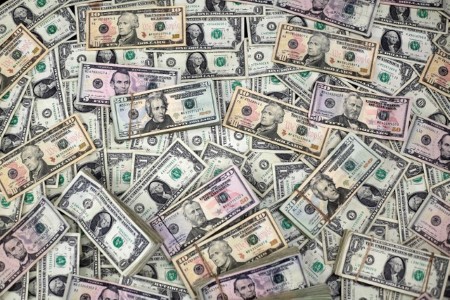




Philippines Trade Update: Exports momentum continues
 DOWNLOAD
DOWNLOAD

Quarterly Economic Growth Release: More BSP cuts to come
 DOWNLOAD
DOWNLOAD

Monthly Economic Update: Fed catches up
 DOWNLOAD
DOWNLOAD


US yield curve hits steepest in two years as Fed opts for big rate move

NEW YORK – The US Treasury yield curve on Wednesday touched its steepest level since July 2022 after the Federal Reserve cut interest rates by 50 basis points, a larger-than-usual rate reduction as the central bank grappled with a weakening labor market.
The widely tracked spread between US two- and 10-year yields hit as wide as 10.2 bps and was last at 8.6 bps. A steeper curve suggests more easing is on the way.
The Fed in a statement said it has gained greater confidence that inflation is moving sustainably toward its 2% goal and that the risks between prices and employment are roughly in balance. It slashed the benchmark overnight rate to a range of 4.75% to 5%.
Before the rate decision, futures on the fed funds rate, which measures the cost of unsecured overnight loans between banks, had been betting on a 50-bp cut, even as a majority of Wall Street economists were anticipating a 25-bp move.
“I think it was fairly anticipated that, whether it was 25 or 50 basis points, what was most important was the messaging behind 50 basis points,” said Tom Hainlin, senior investment strategist, at US Bank in Minneapolis.
“And if the messaging was, ‘We’re very concerned about a potential contraction or slowdown in the economy’ … we didn’t hear that messaging. So this wasn’t necessarily some preventative medicine for something bad that was going on in the economy, but more they felt that they had the opportunity to bring rates down from a high level.”
Late in the session, US Treasury yields rose in choppy trading. The benchmark 10-year yield rose 7.1 bps to 3.713% after earlier hitting its highest in more than a week. The yield posted its best daily gain since Aug. 21.
US 30-year yields increased 7.6 bps to 4.029%, also registering its largest daily rise in about a month.
On the front end of the curve, US two-year yields advanced 4.2 bps to 3.634%.
The US central bank’s forecast, or the so-called “dots” showed rates going down to 4.375% by the end of 2024, which suggested about an additional 50-bp of easing this year. The year-end forecast for 2025 showed additional cuts of 100 bps, and a final 50 bps in 2026 to end in a 2.75%-3.00% range.
In a press conference, Fed Chair Jerome Powell noted that the central bank is in no rush to cut rates, adding that it will move as fast or as low as it thinks appropriate.
Elyse Ausenbaugh, head of investment strategy at J.P. Morgan Wealth Management, wrote in emailed comments that the decision to go big with the rate cut and Powell’s message during the press conference bolstered expectations for the soft landing scenario for the US economy.
“Did the economy need a 50-bp cut today to avoid a breakdown? We don’t think so; the labor market is slowing but not crumbling, retail sales data released earlier this week showed a resilient consumer, and the outlook for corporate earnings and profit margins looks solid.”
Following the rate decision, fed funds futures have priced in about 74 bps in cuts over the next two policy meetings, and 190 bps of cumulative easing by the end of 2025.
(Reporting by Gertrude Chavez-Dreyfuss; Additional reporting by Nupur Anand; Editing by Alistair Bell and Jonathan Oatis)
This article originally appeared on reuters.com





 By Reuters
By Reuters